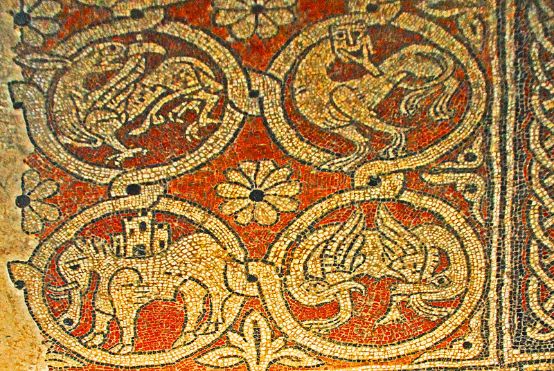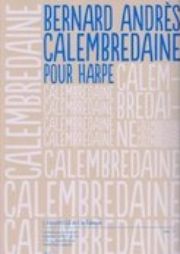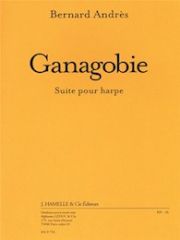Extremely contrasting pieces
Two new works for harp, "Calembredaine" and "Ganagobie", by Bernard Andrès promise fun and atmosphere.

In 2012 (Calembredaine) and 2013 (Ganagobie) composed two works that could not be more different. The promising titles for us German speakers conceal worlds apart: Calembredaine means "silly fun", while Ganagobie is the name of a Benedictine monastery in Haute Provence. The music differs accordingly!
First to CalembredaineA truly witty piece, entertaining and lively. It is written in 6/8 time and plays with rhythmic shifts and offbeats. Short pauses create surprises that really lead you by the nose. For the most part, the piece is based on its own mode, which is somewhat reminiscent of Arabic music. This means that there are only a few pedal changes, but it has to be played on a pedal harp. The fun lasts only four pages, has momentum and is gripping. In addition to the usual playing techniques, Andrès' typical "Sons Xylo" and "Sons Pincées" also appear. In terms of difficulty, I would assign the piece to the 5th to 6th level. A printing error should also be pointed out here: At the end of bar 25, the bass clef is missing in the left hand, and at the end of bar 30, it is resolved back into treble clef.
Ganagobie has a completely different effect: it is a suite of five movements. The quarter pulse is clearly perceptible throughout, reminiscent of a monastery resting on pillars. The various movements describe a dignified mood: in the first, Le Monastère sur la CollineThe monastery can be seen on the hill; in the second, Le Portail de pierreYou enter through the portal; you visit the old monk in the third, Le Vieux Moine; the fourth is about cosmic mosaics, Mosaïques cosmologiquesand the fifth plays under green oaks, Sous les chènes vertes. After starting fortissimo, the piece ends very quietly after eleven minutes.
Bernard Andrès makes use of different musical languages. While the beginning is rather impressionistic and reminiscent of Debussy, romantic harmonies and gestures reappear later on to depict the size of the monastery. Filigree semiquaver movements in the right hand often fill out the basic structure of the columns, reminiscent of the ornamentation in the monastery.
The piece is not easy to play, as it is mostly quiet and rarely seeks the tension of contrasts. However, I can imagine that it would come into its own in a church setting.
Bernard Andrès: Calembredaine pour Harpe, HA 09753, ca. € 11.40, Edition Hamelle (Alphonse Leduc), Paris
id.: Ganagobie, Suite pour Harpe, HA 09754, ca. € 17.80









